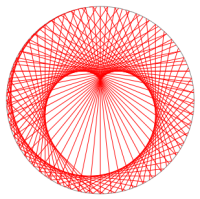LeetCode Contest 48
这次比赛有点简单的样子。
第一题Second Minimum Node In a Binary Tree
我当时什么都没有想,简单地将树的所有值取下来排序取出第二最小值。
# Definition for a binary tree node.
# class TreeNode(object):
# def __init__(self, x):
# self.val = x
# self.left = None
# self.right = None
class Solution(object):
def findSecondMinimumValue(self, root):
"""
:type root: TreeNode
:rtype: int
"""
nums = set()
def dfs(root):
if not root:
return
nums.add(root.val)
dfs(root.left)
dfs(root.right)
dfs(root)
return -1 if len(nums)<2 else sorted(list(nums))[1]
第二题Trim a Binary Search Tree
比较简单的DFS。
# Definition for a binary tree node.
# class TreeNode(object):
# def __init__(self, x):
# self.val = x
# self.left = None
# self.right = None
class Solution(object):
def trimBST(self, root, L, R):
"""
:type root: TreeNode
:type L: int
:type R: int
:rtype: TreeNode
"""
if not root:
return None
if root.val < L:
return self.trimBST(root.right, L, R)
if root.val > R:
return self.trimBST(root.left, L, R)
root.left = self.trimBST(root.left, L, R)
root.right = self.trimBST(root.right, L, R)
return root
第三题Maximum Swap
贪心算法。从左到右找到第一个要换的数字,然后从剩下的数字中从右到左找出被换数字。比如9937474,从左到右我们找到要被换的数字3,而且我们知道要用7来换。关键的是我们需要从右往左寻找第一个7,用这个7来换3,所以得到答案:9977434
class Solution(object):
def maximumSwap(self, num):
"""
:type num: int
:rtype: int
"""
if num == 0:
return 0
ln = []
while num > 0:
ln.append(num % 10)
num /= 10
ln = ln[::-1]
tmp = sorted(ln, key=lambda x: -x)
i = 0
while i < len(ln) and ln[i] == tmp[i]:
i += 1
if i < len(ln):
j = len(ln)-1
while ln[j] != tmp[i]:
j -= 1
ln[i], ln[j] = ln[j], ln[i]
ans = 0
p = 1
for n in ln[::-1]:
ans += n*p
p *= 10
return ans
其实枚举所有可能性也是可以的:
class Solution(object):
def maximumSwap(self, num):
"""
:type num: int
:rtype: int
"""
ans = num
num = str(num)
for i in xrange(len(num)):
for j in xrange(i+1, len(num)):
c = list(num)
c[i], c[j] = c[j], c[i]
ans = max(ans, int(''.join(c)))
return ans
第四题Bulb Switcher II
根据mod 6将所有灯分成6类:1,2,3,4,5,6。所有的开关只会对这6类灯操作。
开关1改变:1,2,3,4,5,6
开关2改变:2,4,6
开关3改变:1,3,5
开关4改变:1,4
根据上面的分析,我们可以进一步将6类缩减成四类:A=(1),B=(2,6),C=(3,5),D=(4)。这样开关所控制的情况为:
开关1改变:A,B,C,D
开关2改变:B,D
开关3改变:A,C
开关4改变:A,D
一开始的时候我们用b1111=15来表示所有状态ABCD,那么开关分别对应15,5,10,9。开关的操作相当于与运行。现在只要枚举所有情况即可。
class Solution(object):
def flipLights(self, n, m):
"""
:type n: int
:type m: int
:rtype: int
"""
ans = set([15])
btn = [15, 10, 9, 5]
mask = (1 << min(n, 4)) - 1
for i, n in enumerate(btn):
btn[i] = n & mask
for _ in xrange(m):
tmp = set()
for n in ans:
for b in btn:
tmp.add(n ^ b)
ans = tmp
return len(ans)
